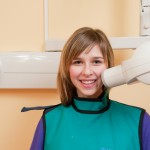
If diagnosed early the caries process can be stabilised or reversed, so detection and diagnosis in this early state is important. This early carious state is not often reported in dental epidemiology so the challenge needed to manage caries may be underestimated. In recent decades the traditional dental imaging method of analogue bitewing radiography has been largely replaced with digital imaging and cone beam computed tomography (CBCT) has also been introduced.
The aim of this review was to determine the diagnostic accuracy of different dental imaging methods to inform the detection and diagnosis of non-cavitated enamel only coronal dental caries.
Methods
Searches were conducted in the Medline, Embase, US National Institutes of Health Ongoing Trials Register (ClinicalTrials.gov) and the World Health Organization International Clinical Trials Registry Platform databases. Diagnostic accuracy study designs that compared a dental imaging method (Analogue[conventional]radiographs; digital radiographs and cone beam computed tomography [CBCT]) with a reference standard (histology, excavation, enhanced visual examination) were considered. Two reviewers independently extracted data with sensitivity and specificity and 95% confidence intervals (CIs) were reported for each study. Comparative accuracy of different radiograph methods was conducted based on indirect and direct comparisons between methods.
Results
- 104 datasets from 77 studies reporting 15,518 tooth surfaces were included
- For analogue radiographs there were 55 datasets from 51 studies, 42 datasets from 40 studies for digital radiographs and 7 datasets from 7 studies for cone beam computed tomography (CBCT).
- Only 17 studies were of an in-vivo study design, carried out in a clinical setting.
- No studies were considered to be at low risk of bias, but 16 studies were judged to have low concern for applicability across all domains.
- The patient selection was the domain with the largest number of studies judged to be at high risk of bias (43 studies).
- Results of the individual studies showed substantial variability with sensitivities ranging from 0 to 0.96 and specificities from 0 to 1.00.
- For all imaging methods the estimated summary sensitivity and specificity point was 0.47 (95% CI: 0.40 to 0.53) and 0.88 (95%CI; 0.84 to 0.92), respectively.
- This means that in a cohort of 1000 tooth surfaces with a prevalence of enamel caries of 63%, 337 tooth surfaces would be classified as disease free when enamel caries was truly present (false negatives), and 43 tooth surfaces would be classified as diseased in the absence of enamel caries (false positives).
- Meta-regression indicated that measures of accuracy differed according to the imaging method with the highest sensitivity observed for CBCT, and the highest specificity observed for analogue radiographs.
Conclusions
The authors concluded: –
The design and conduct of studies to determine the diagnostic accuracy of methods to detect and diagnose caries in situ are particularly challenging. Low-certainty evidence suggests that imaging for the detection or diagnosis of early caries may have poor sensitivity but acceptable specificity, resulting in a relatively high number of false-negative results with the potential for early disease to progress. If left untreated, the opportunity to provide professional or self-care practices to arrest or reverse early caries lesions will be missed. The specificity of lesion detection is however relatively high, and one could argue that initiation of non-invasive management (such as the use of topical fluoride), is probably of low risk.
CBCT showed superior sensitivity to analogue or digital radiographs but has very limited applicability to the general dental practitioner. However, given the high-radiation dose, and potential for caries-like artefacts from existing restorations, its use cannot be justified in routine caries detection. Nonetheless, if early incidental carious lesions are detected in CBCT scans taken for other purposes, these should be reported. CBCT has the potential to be used as a reference standard in diagnostic studies of this type.
Despite the robust methodology applied in this comprehensive review, the results should be interpreted with some caution due to shortcomings in the design and execution of many of the included studies. Future research should evaluate the comparative accuracy of different methods, be undertaken in a clinical setting, and focus on minimising bias arising from the use of imperfect reference standards in clinical studies.
Comments
We have previously looked at reviews of caries detection (Dental Elf – 10th Jun 2015; Dental Elf – 13th Feb 2013). This new detailed diagnostic test accuracy review of fluorescence-based devices and has been undertaken following standard Cochrane Diagnostic Test Accuracy (DTA) and is one of a suite of reviews using the same generic protocol. This review focuses on the ability of analogue and digital radiographs, and cone beam computed tomography (CBCT) to detect early or enamel caries to support caries management strategies. While CBCT is included and shows promise in detecting early carious lesions the high levels of radiation make this difficult to justify in a typical clinical setting. In addition, the review suggests that analogue and digital radiographs do not have sufficient sensitivity to detect and inform the diagnosis of early caries for clinicians
Links
Primary Paper
Walsh T, Macey R, Riley P, Glenny A-M, Schwendicke F, Worthington HV, Clarkson JE, Ricketts D, Su T-L, Sengupta A. Imaging modalities to inform the detection and diagnosis of early caries. Cochrane Database of Systematic Reviews 2021, Issue 3. Art. No.: CD014545.
DOI: 10.1002/14651858.CD014545.
Other references
Cochrane Oral Health blog- Dental imaging methods for the detection of early tooth decay
Dental Elf – 6th Jan 2021
Dental Elf – 10th Jun 2015
Radiographic caries detection is highly accurate for cavitated proximal lesions
Dental Elf – 13th Feb 2013
Visual examination still the best way of detecting early carious lesions
